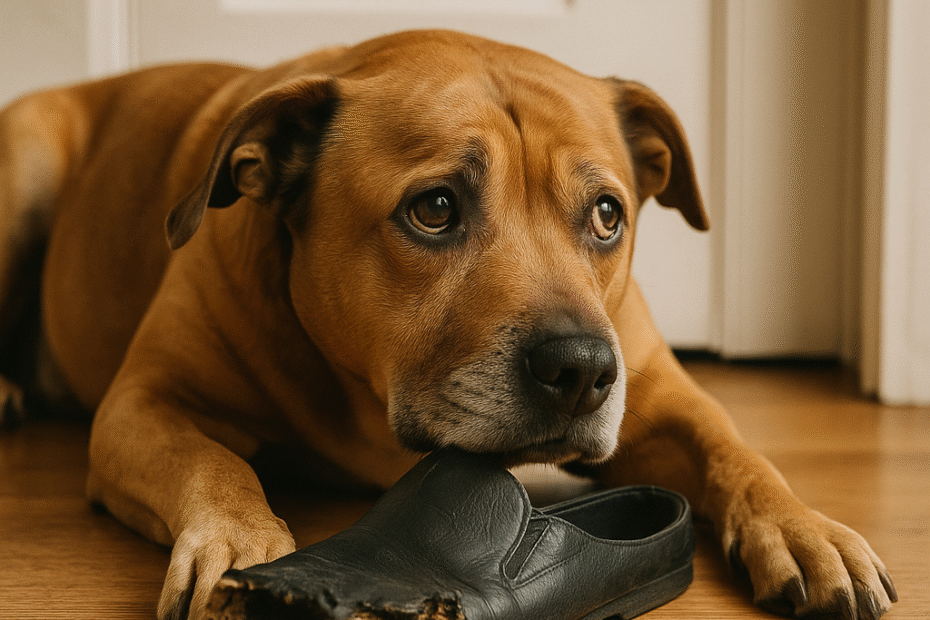What It Is and What It Isn’t
Separation anxiety is often misunderstood. It is a term that gets used to explain all sorts of alone-time struggles, from barking to chewing furniture. But separation anxiety is more than a label. It is a reminder that not every behaviour we see when a dog is left alone comes from the same place.
Understanding the difference matters. It changes how we respond, what we prioritise, and how we support our dogs through their experience. As you would expect, the first port of call should be your vet to rule out other issues, and perhaps some medication to help y our pooch cope.
When It Is Anxiety
True separation anxiety is rooted in fear. These dogs are not misbehaving. They are overwhelmed. They are having a panic attack. Some may whine and pace, others might bark for hours or toilet indoors. The signs are not always loud. A dog who freezes or shuts down can be just as distressed.
What sets separation anxiety apart is not the behaviour itself, but the emotion behind it. These dogs are not protesting or acting out. They are struggling to feel safe without the person (or people) they rely on most.
You may notice signs before you even leave. Picking up your keys might make your dog restless. Putting on your shoes could trigger whining or panting. The anxiety starts in anticipation and builds after you go.
Separation anxiety is not about volume or damage. It is about recognising the difference between boredom, frustration, and genuine emotional distress.
When It Isn’t
Many dogs show some difficulty with being left alone. Puppies may whimper when they cannot follow you from room to room. Adolescents with too much energy may dig or chew. A dog that barks at every sound outside might be alert rather than anxious.
These behaviours still need training and support, but the approach is different. A dog who is under-stimulated may benefit from puzzle toys and structured alone-time practice. A dog who is afraid may need a slower process focused on emotional safety.
Using the term separation anxiety when it does not apply can lead us down the wrong path. Equally, failing to recognise it when it is present can leave the dog feeling worse over time.
This is why asking yourself if your dog’s behaviour is really separation anxiety is a useful question to keep asking, especially when things are unclear.
Training That Builds Confidence
Helping a dog feel safe when left alone starts with understanding how they feel, not just what they do. A dog that appears calm is not always a coping dog. Sometimes stillness is shut down, not relaxation.
Training for dogs with separation anxiety needs to be carefully planned. It may involve very short absences at first. In some cases, we do not leave at all until the dog feels secure watching us move around the house without stress. Success is measured in seconds, not hours when we first start.
This is not about ignoring the behaviour. It is about working beneath it. That is where progress happens.
Learning what separation anxiety is helps remind us that comfort is the goal. Not silence. Not obedience. Just calm, steady trust that you will return and they can manage until you do.
If You Need Support
The first thing I can tell you is that nothing you have done has given your dog separation anxiety. This is a mental health condition. Just like a human with anxiety cannot help feeling the way they do, your dog cannot help it either. You can read more about separation anxiety at the Pet Professional Guild Australia.
If your dog struggles with alone time and you are not sure what to do, I can help. I offer private, games-based training that is designed to support both the dog and their guardian. Together, we look at the full picture and build a plan that fits your routine and your dog’s emotional needs.
👉 Book a consultation here
Separation anxiety is hard, but it is not hopeless. And it does not need to be faced alone.
Game On!
Let’s Play!
Hxx

